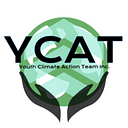Natural Disasters: A Liability to Food Insecurity
Food insecurity is a global issue perpetuated by a lack of food production, access, and stability. Causing conditions that range from undernutrition to chronic diseases, food insecurity is of a systemic nature controlled by the availability of natural resources — one that has been devastated by natural disasters. According to a report from the U.S. Department of Agriculture, 10.5 percent of U.S. households (13.8 million) were food insecure at some point in 2020. A lack of resources and insufficient financial income were cited as the main reasons why Americans were so food insecure. However, a source of food insecurity often overlooked is climate change.
Often referred to as a “threat multiplier,” climate change heightens the severity of natural disasters that are detrimental to starved and undernourished people. The World Meteorological Organization reports that the global mean surface temperature was 1.2 C warmer than the pre-industrial baseline from 1850–1900, resulting in reduced precipitation rates and dried-out vegetation and soil. Severe droughts worsen agricultural production and water scarcity, leading to health consequences for the people living in those regions. For instance, Madagascar, a country in East Africa, is facing its worst drought in four decades and leaving approximately 1.14 million people food insecure and left to resort to raw cactus, wild leaves, and locusts as sources of nutrition. Moreover, due to the pronounced economic inequalities present in poorer countries, they are disproportionately affected by drastic environmental changes.
“You’re sort of reaching a breaking point with land itself and its ability to grow food and sustain us,” states Aditi Sen, a senior policy advisor on climate change at Oxfam America, an anti-poverty advocacy organization. United Nations World Food Program (WFP) spokesperson Shelley Thakral wrote on the humanitarian information portal ReliefWeb, “The next planting season is less than two months away, and the forecast for food production is bleak. The land is covered by sand; there is no water and little chance of rain.”
On the other hand, crops may be susceptible to contamination or mold due to flooding — a public health risk — that leaves low-income countries extremely vulnerable to future natural disasters but also contributes to the perpetual cycle of climate change. Furthermore, flooding brings about unpredictable weather patterns that make it difficult to maintain quality farmland as the soil gets depleted of nutrients and loses the appropriate water capacity. If the soil isn’t suitable for cultivating crops, rural communities that depend on farming for their lives will be harmed.
Whether it’s by droughts or flooding, natural disasters will only continue to worsen the social divide, distressing countries’ economic and agricultural systems. By 2050, the world population is expected to reach 9.7 billion, and while the growth rates will vary across different regions, it is important to note that resources will not be sufficiently provided for every single person. A critical step in solving this lack of resources will be to recognize our own effects on the environment. Ultimately, unless international efforts are taken, climate change will exacerbate food insecurity and poverty at an alarming rate in countries all across the globe.
